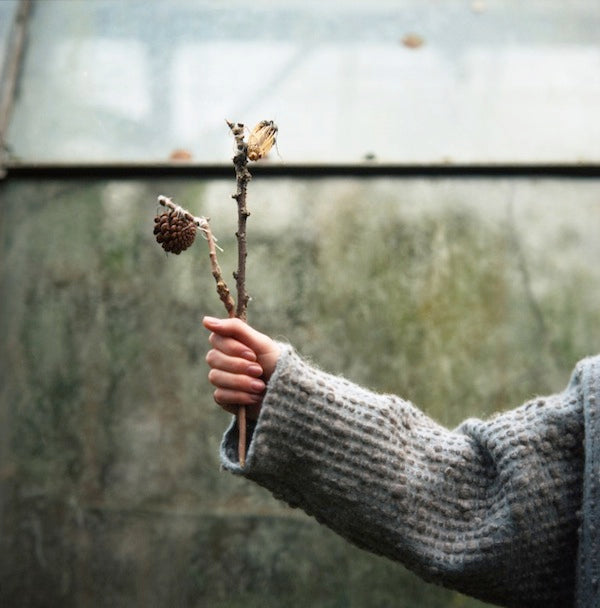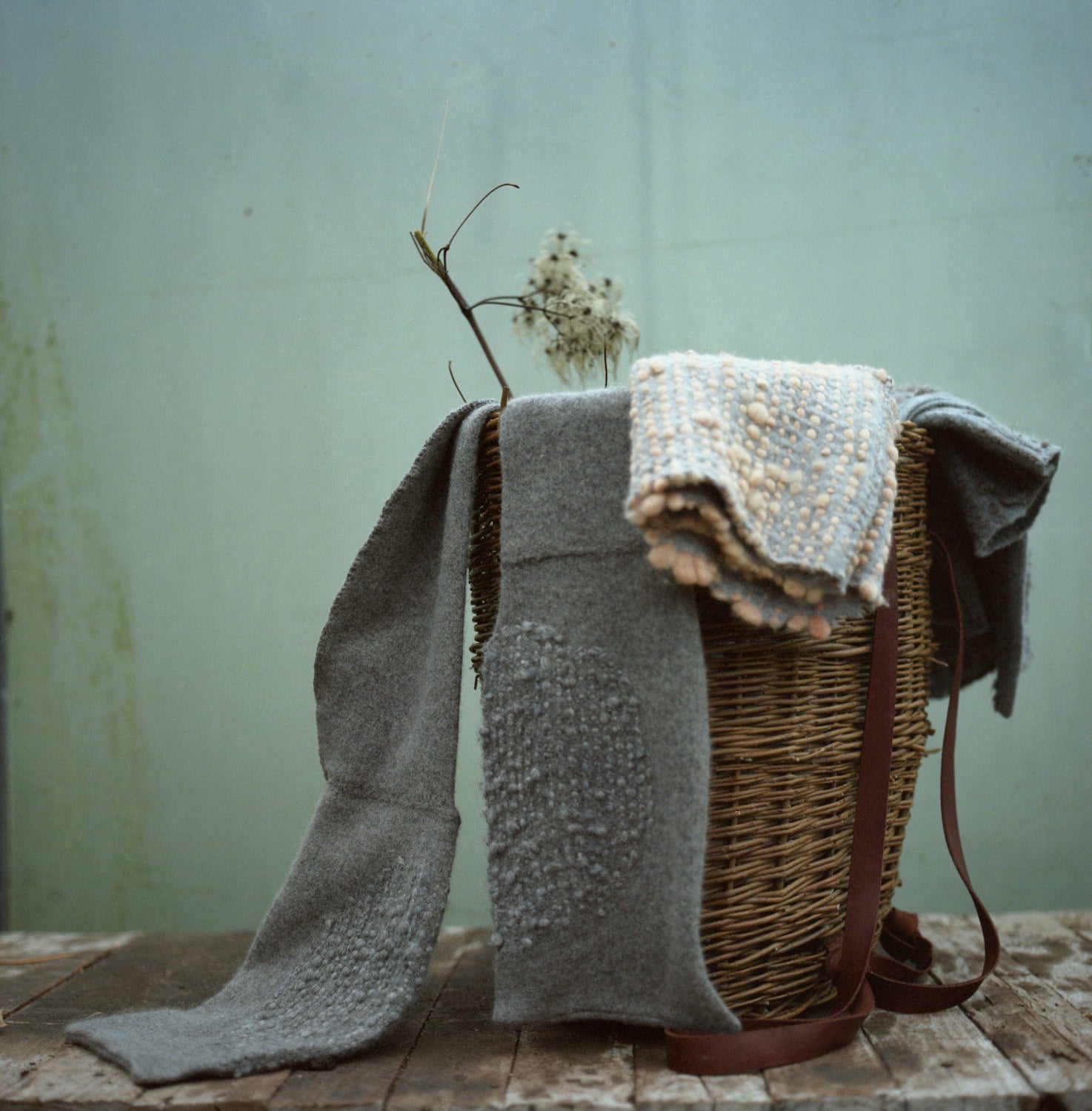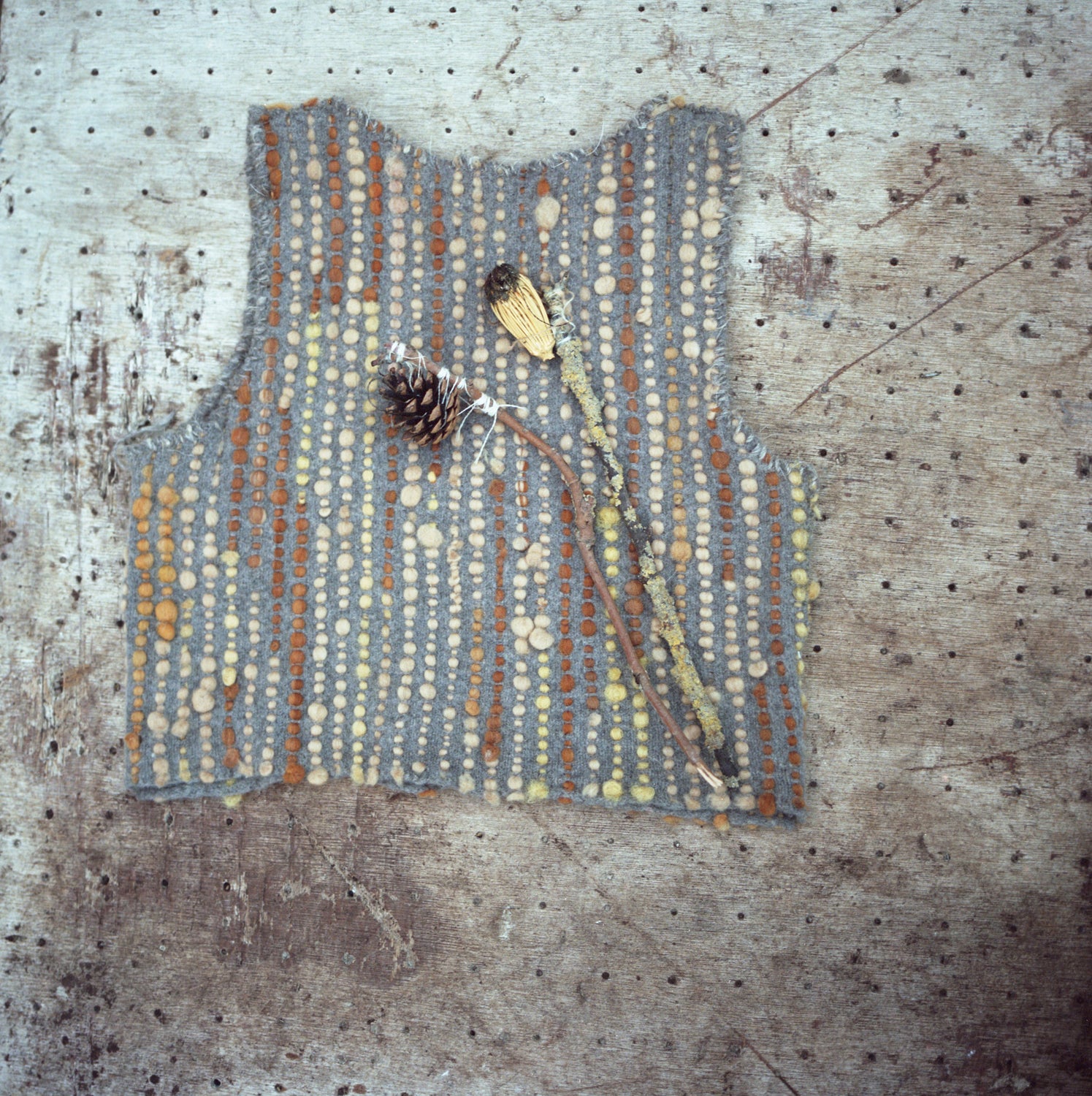Milkweed Interview
Guest blogger Aloha Bonser Shaw interviews Milkweed designer Tallula Bentley.
Aloha: What is the design and thought process for you when making work?
Talulla: Well, the work I’ve made over the last year has kind of come from looking at biomimicry within design, which I became really interested in researching. That has a lot to do with the structure and form of my work.
I like to use natural and found objects within my work, and try to of recycle and re-use when possible, but without this being an obvious feature. I really love Japanese style and structure in fashion, so I was kind of combining something that can have an organic feel with natural materials, in a way that’s quite contemporary shapes.
 And where do you source your materials?
I try and source everything as locally as possible, which has come about in a really natural way, just through not having very much money to make garments over the last few months. I contacted a lot of other people, who either keep their own sheep, or use natural dying for example. I’ve also been donated quite a lot of materials, the fleeces I use are from a Sussex breed of sheep, and all the fibres are too short to be spun into yarn. The fact that I had this wool which only worked in a certain way, really influenced the materials I made, because they couldn’t hold their own structure, so I had to make a base structure and work into that. So most of the work is made from Sussex sheep, and in terms of other things I use British lambs wool. That’s how I make most of my materials.
Dyeing is something I’m also learning about and using in my work, and really want to explore more. Recently I have been experimenting with using onion-skins and woad, for pale brown and blue colours. I also use madder, which can create a really dark red, but I was using it as an exhaust, which meant it had already been used in a dye vat for something else, resulting in muted pink tones. I also use these dyes with other things, like dried flower petals, you can be quite playful with it, which can have a really interesting effect on the fibres.
And where do you source your materials?
I try and source everything as locally as possible, which has come about in a really natural way, just through not having very much money to make garments over the last few months. I contacted a lot of other people, who either keep their own sheep, or use natural dying for example. I’ve also been donated quite a lot of materials, the fleeces I use are from a Sussex breed of sheep, and all the fibres are too short to be spun into yarn. The fact that I had this wool which only worked in a certain way, really influenced the materials I made, because they couldn’t hold their own structure, so I had to make a base structure and work into that. So most of the work is made from Sussex sheep, and in terms of other things I use British lambs wool. That’s how I make most of my materials.
Dyeing is something I’m also learning about and using in my work, and really want to explore more. Recently I have been experimenting with using onion-skins and woad, for pale brown and blue colours. I also use madder, which can create a really dark red, but I was using it as an exhaust, which meant it had already been used in a dye vat for something else, resulting in muted pink tones. I also use these dyes with other things, like dried flower petals, you can be quite playful with it, which can have a really interesting effect on the fibres.
 I remember you mentioning that you often make a garment with a particular person in mind.
Yes. With the work I’ve been doing recently, I’ve mainly been making garments for someone because they’ve asked me to make something for them.
In terms of my previous work, I really felt that each piece was a labour of love, as they would take so long to make. When I was doing the weaving process I’d often be outside when working, and it could take a few days just to weave the fabric. So it is nice to have a person in mind when making the garments, as it feels so much more worthwhile. I find I can have a focus on that person when I’m creating the shape, and painstakingly making the fabric.
Interview and photography by Aloha Bonser Shaw
www.milkweed.org.uk
I remember you mentioning that you often make a garment with a particular person in mind.
Yes. With the work I’ve been doing recently, I’ve mainly been making garments for someone because they’ve asked me to make something for them.
In terms of my previous work, I really felt that each piece was a labour of love, as they would take so long to make. When I was doing the weaving process I’d often be outside when working, and it could take a few days just to weave the fabric. So it is nice to have a person in mind when making the garments, as it feels so much more worthwhile. I find I can have a focus on that person when I’m creating the shape, and painstakingly making the fabric.
Interview and photography by Aloha Bonser Shaw
www.milkweed.org.uk

 And where do you source your materials?
I try and source everything as locally as possible, which has come about in a really natural way, just through not having very much money to make garments over the last few months. I contacted a lot of other people, who either keep their own sheep, or use natural dying for example. I’ve also been donated quite a lot of materials, the fleeces I use are from a Sussex breed of sheep, and all the fibres are too short to be spun into yarn. The fact that I had this wool which only worked in a certain way, really influenced the materials I made, because they couldn’t hold their own structure, so I had to make a base structure and work into that. So most of the work is made from Sussex sheep, and in terms of other things I use British lambs wool. That’s how I make most of my materials.
Dyeing is something I’m also learning about and using in my work, and really want to explore more. Recently I have been experimenting with using onion-skins and woad, for pale brown and blue colours. I also use madder, which can create a really dark red, but I was using it as an exhaust, which meant it had already been used in a dye vat for something else, resulting in muted pink tones. I also use these dyes with other things, like dried flower petals, you can be quite playful with it, which can have a really interesting effect on the fibres.
And where do you source your materials?
I try and source everything as locally as possible, which has come about in a really natural way, just through not having very much money to make garments over the last few months. I contacted a lot of other people, who either keep their own sheep, or use natural dying for example. I’ve also been donated quite a lot of materials, the fleeces I use are from a Sussex breed of sheep, and all the fibres are too short to be spun into yarn. The fact that I had this wool which only worked in a certain way, really influenced the materials I made, because they couldn’t hold their own structure, so I had to make a base structure and work into that. So most of the work is made from Sussex sheep, and in terms of other things I use British lambs wool. That’s how I make most of my materials.
Dyeing is something I’m also learning about and using in my work, and really want to explore more. Recently I have been experimenting with using onion-skins and woad, for pale brown and blue colours. I also use madder, which can create a really dark red, but I was using it as an exhaust, which meant it had already been used in a dye vat for something else, resulting in muted pink tones. I also use these dyes with other things, like dried flower petals, you can be quite playful with it, which can have a really interesting effect on the fibres.
 I remember you mentioning that you often make a garment with a particular person in mind.
Yes. With the work I’ve been doing recently, I’ve mainly been making garments for someone because they’ve asked me to make something for them.
In terms of my previous work, I really felt that each piece was a labour of love, as they would take so long to make. When I was doing the weaving process I’d often be outside when working, and it could take a few days just to weave the fabric. So it is nice to have a person in mind when making the garments, as it feels so much more worthwhile. I find I can have a focus on that person when I’m creating the shape, and painstakingly making the fabric.
Interview and photography by Aloha Bonser Shaw
www.milkweed.org.uk
I remember you mentioning that you often make a garment with a particular person in mind.
Yes. With the work I’ve been doing recently, I’ve mainly been making garments for someone because they’ve asked me to make something for them.
In terms of my previous work, I really felt that each piece was a labour of love, as they would take so long to make. When I was doing the weaving process I’d often be outside when working, and it could take a few days just to weave the fabric. So it is nice to have a person in mind when making the garments, as it feels so much more worthwhile. I find I can have a focus on that person when I’m creating the shape, and painstakingly making the fabric.
Interview and photography by Aloha Bonser Shaw
www.milkweed.org.uk

